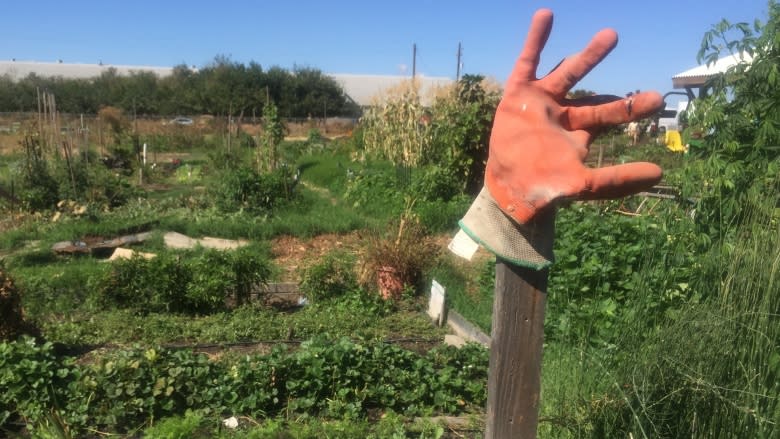In California's farm belt, 'pesticide drift' has residents worried about their health
Four-year-old Roberto Diaz is a round little fellow who strides confidently out into the yard. It's early, before most daycares would open. However this one in Courtland — 35 kilometres north of Sacramento in California's agricultural heartland — is for the children of the mostly poor, mostly Latino, farm workers, whose shifts in the fields often start before dawn.
But those who care for these kids believe they may not be safe here.
According to Rosalva Beas, a caregiver at the daycare, there's danger in the wind. Beas looks through the fence, past the playing kids, towards the distant pear orchards.
Wind blows pesticides toward the daycare
"When they spray pesticides, the wind blows this way and it contaminates this area," she says.
It's known as pesticide drift: Chemicals applied to fields and orchards can sometimes disperse further than industry experts claim they're supposed to travel. According to California's Department of Health, 500,000 California kids go to school within 400 metres of fields that are sprayed with pesticides.
Need for stricter rules around pesticides
When it comes to spraying near California schools, there are no federal or state laws. Rules vary from county to county. Now, some daycares and schools claim their students are getting sick. Residents of farm country are lobbying for tightening of rules over where and when pesticide can be sprayed.
"Before, we didn't see so many illnesses," Beas says. "Now we're seeing more and more illnesses, these kids who are just starting out in life."
And it's not just the kids getting sick.
"I'm sick now, I got asthma," says Bianca Sanchez, a caregiver at the childcare centre.
"Because when they're doing the pear, everything comes over here," she says.
The pesticides can stay in the air for days, according to Emily Marquez, a staff scientist at the Pesticide Action Network (PAN).
She's demonstrating a metre-high device that looks like a half-finished science experiment; all tubes and glass, it is a low-cost airborne particulate matter detector.
She lends it to homeowners, schools and childcare facilities so they can test their own air, to give them independent data confirming whether there's been pesticide drift. If it is happening, it's especially serious for children, she says.
"Kids are more susceptible to pesticide exposure, not only because they're still developing, but also we say pound for pound they take in more," Marquez says. "So for their size, they actually inhale more air and also take in more water."
High rates of asthma among children
The link between pesticides and specific cases of cancer or respiratory problems is hard to prove, says Paul Towers, PAN's organizing director. But he says 20 per cent of children in California's Central Valley, which stretches 720 kilometres through the centre of the state, have asthma, much higher than the national rate. He says doctors are supposed to report all pesticide-related illnesses, but they rarely do.
"I'd say, by and large, most physicians don't have that training or a lot of experience," Towers says.
A recent report by researchers at University of California at Los Angeles found an increased cancer risk from the mix of fumigants and pesticides often used near schools.
Gabriela Garibay, 27, was exposed to pesticide as a child, when she lived in a camp for farm workers in the San Joaquin Valley and attended a school nearby.
"Once my knee started just getting very swollen, that was like 'OK something's wrong,' My body's telling me something," says Garibay.
Several years ago, she was diagnosed with a rare form of cancer. Doctors don't know what caused it, but she says they told her all pesticides could certainly have been a risk factor.
"The airplanes could go by spraying pesticides and they never tell us to go, and even if they tell us at that point to go home, they had already sprayed," says Garibay, whose cancer is now in remission.
Farm belt residents fight back
Now many residents of California's farm belt are fighting back.
Beas is one of 800 people from the community who recently testified in front of California's Department of Pesticide Regulation. It's now re-writing rules that govern where and when pesticides can be sprayed, which will go into effect in April 2017.
"Ideally they would create a no-spray or no-fumigation buffer zone within a mile of all schools," Towers says. He's also urging the government to restrict aerial fumigation, and stop farms from spraying shortly before or during school hours.
"This is a really important opportunity to protect our children," he says.






